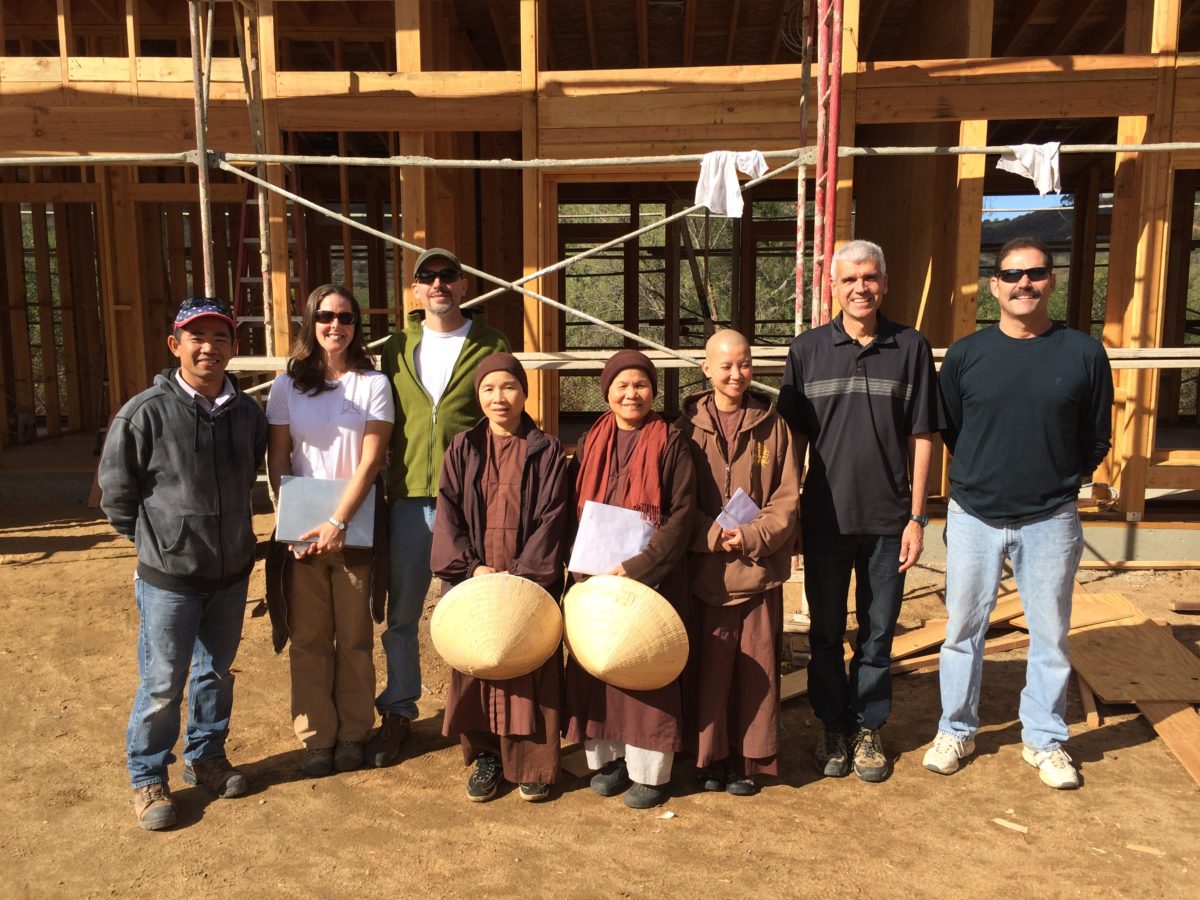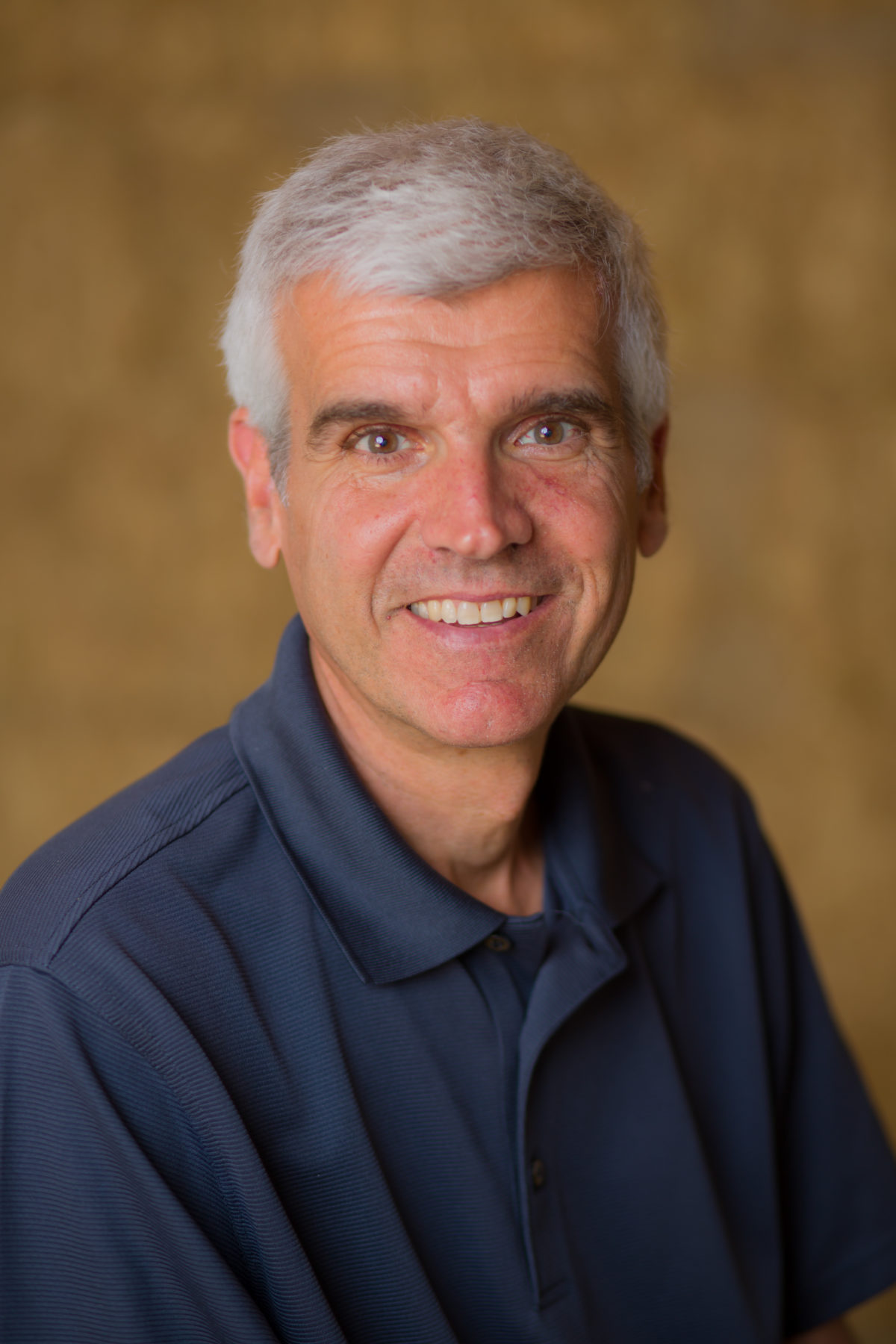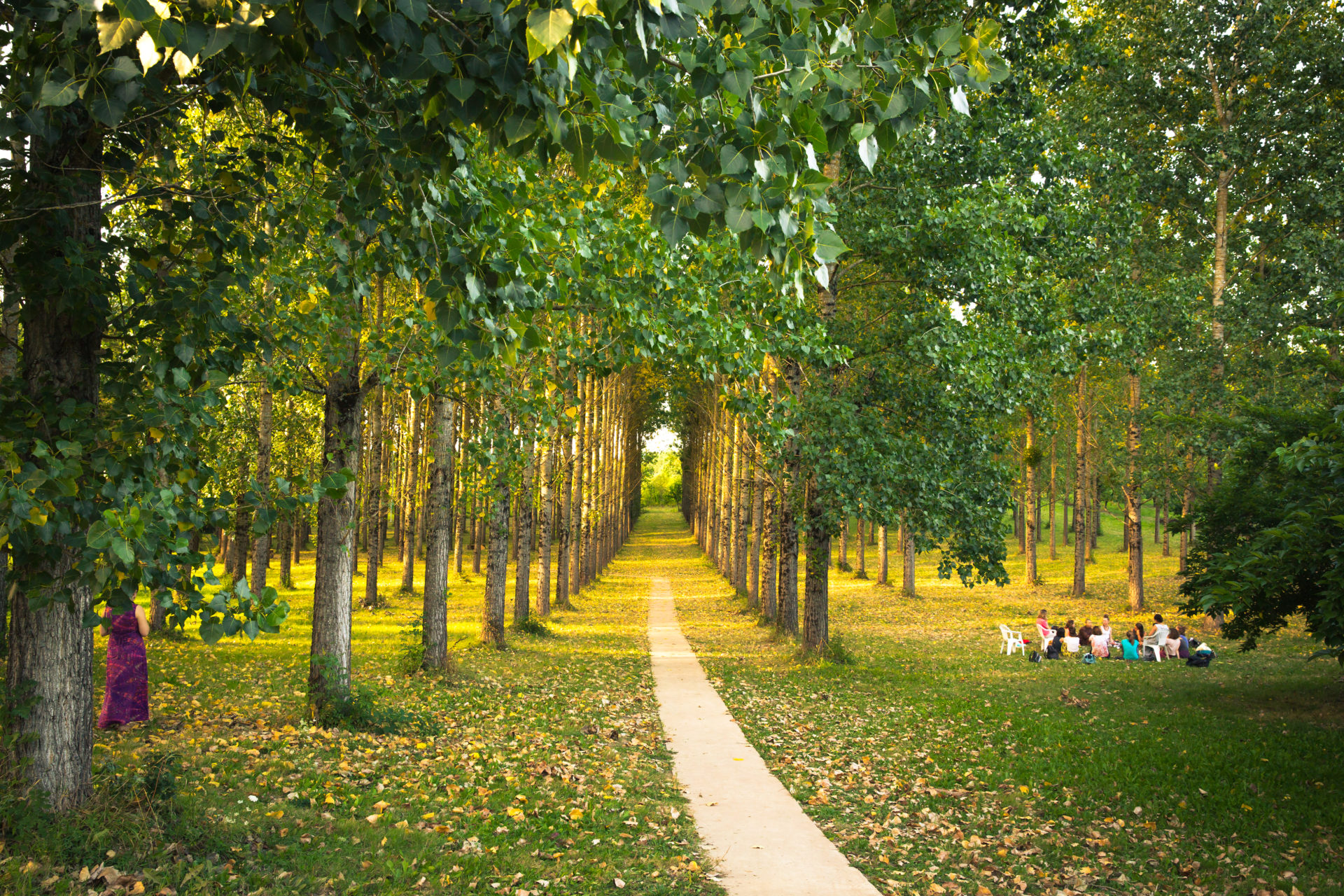Discovering Right Livelihood in Construction
By Ed Earl

I had the honor of serving as the project manager for the recent construction of the four building nunnery complex at Deer Park Monastery. This unique experience transformed my career and changed the way I look at construction and design. In the past, my mindfulness practice was a personal journey separate from my professional life.
Discovering Right Livelihood in Construction
By Ed Earl

I had the honor of serving as the project manager for the recent construction of the four building nunnery complex at Deer Park Monastery. This unique experience transformed my career and changed the way I look at construction and design. In the past, my mindfulness practice was a personal journey separate from my professional life. However, this project enlightened me on how to better relate my practice to the construction industry and serve as a construction project manager.
CAREER AT A CROSSROADS: SEARCHING FOR RIGHT LIVELIHOOD
In October 2013, I attended a five-day retreat at Deer Park Monastery with Thay and found myself at a crossroads in my career. I struggled with my construction management business, and it never fully recovered from the Great Recession five years earlier. I worked with a life coach and explored various career options.
After the presentation on the Five Mindfulness Trainings during the retreat, I shared with Dave Sommer, a member of my Sangha, that I struggled with the Second Mindfulness Training and Right Livelihood. I worked on the construction of estate homes, which did not help reduce the suffering of living beings on Earth or reverse the process of global warming. I told Dave that I thought I couldn’t work in right livelihood in my current position, and I should probably close my business and work for a non-profit organization.
The next night, Sister Huong Nghiem and Lisa LeVasseur gave a presentation about the planned nunnery project at Deer Park Monastery and asked if anyone with construction experience could help them get the project off the ground. After the presentation, I met with the sisters and told them I would be willing to volunteer.
The nunnery project introduced me to the concepts of sustainable design and green building, of which I was previously unaware, and provided the perfect opportunity to incorporate mindfulness into the construction project management process. At our initial orientation meeting with the contractors who bid the job, Lisa and I asked everyone to sit in a circle. We began by inviting the bell and asking everyone to go back to their breath. I explained how I used conscious breathing to help myself get through stressful situations that are frequent in a construction project. It was quite a sight to see all of the contractors sitting in a circle and breathing! We continued this practice throughout construction and invited the workers to stop when they heard the monastery bell. I even posted gathas in the portable toilets to invite the crew to become more mindful.
SUSTAINABLE DESIGN AND GREEN BUILDING: FOR A FUTURE TO BE POSSIBLE
Drew Hubbell, an architect well-known for his use of natural building materials and sustainable design, designed the nunnery buildings. The walls of the nunnery were constructed of straw bale covered with earthen plaster, which is much more environmentally friendly than traditional residential construction, both in the materials used and in the creation of structures that are more energy efficient. Drew also took into consideration the surroundings of buildings and positioned them to take advantage of natural ventilation and light in his designs. In previous estate home projects I had worked on, the buildings were the driving force and the surroundings were modified to serve the buildings. But with sustainable design, Drew allowed the buildings to blend in harmony with their surroundings. In both the design and the materials used, this construction project was a wonderful example of interbeing and how the buildings can harmonize with their surroundings and the environment.
During the construction process, I discovered that another member of our Sangha, Jennifer Phelps, was a landscape architect with a focus on sustainable design, so she joined the project to bring the sustainable concepts to the exterior areas around the nunnery complex. As a result of our work together on the nunnery project, Drew, Jennifer, and I helped to create a sustainability collaborative group that meets monthly in San Diego to discuss sustainability in design and construction. Over the past few years, this group has grown to include several other construction companies that worked on the monastery project as well as other green building professionals in the area.
COLLABORATIVE CONSTRUCTION: MINDFUL COMMUNICATION AND HARMONIOUS RELATIONSHIPS
In a traditional construction process, there is a strict chain of command where the architect draws the plans. Then the contractor commits to a budget and sends marching orders to the subcontractors to complete the work. It is a linear and competitive process, much like a military operation. Often there is a lack of trust and openness between the parties due to this structure, which can lead to conflict and difficulties during the construction process. With the support of the monastics and the foundations of our practice, I had the courage to approach the construction process for the nunnery project in a different manner by incorporating the concepts of mindful communication that created much more trust and openness in the project.
I used this experience to look at my profession differently, and I discovered a new approach to construction management called collaborative construction. It is based on open communication with the architect, contractor, subcontractors, and client working together as a team from the early stages of design. Based on trust, cooperation, shared values and objectives, this approach creates harmony and lasting relationships that transform not only the process of construction but also the quality of the final product. I now encourage all of my clients to use this approach, and collaborative construction is incorporated in all aspects of my project management business.
FINDING MY VOICE: SHARING THE DHARMA IN CONSTRUCTION
In January 2015, we had two community work days at the monastery where volunteers stacked the bales of straw into the newly constructed walls of the nunnery. At the beginning of these work days, I gave a short presentation on how we incorporated mindfulness concepts into the design of the project, the building materials, and the construction process. I really enjoyed making these presentations, and I found it reignited my interest in public speaking. I was a Speech major in college, but I didn’t seem to have many opportunities for public speaking within my career in the construction industry.
Later that year, our group made a presentation at the San Diego Green Building Council’s annual conference about the sustainability aspects of the nunnery project. I soon created a presentation called “Lessons From The Zen Builder” about collaborative construction and reduction of conflict in the residential construction process. I have travelled around the country to give this presentation to various construction organizations.
A NEW PERSPECTIVE: DISCOVERING RIGHT LIVELIHOOD
From the sustainable design and green building concepts to the collaborative approach to construction management and my public speaking presentations, I truly feel like I have found my right livelihood.
Ultimately, I discovered that I didn’t have to quit my job and change careers. I just had to look at things differently. By changing my perspective, I was able to incorporate right livelihood with the career I already had. As I look at designing homes differently now, I also see the process of construction management and my career differently.
If you are struggling with issues of right livelihood, it may just take looking at things differently and trying a different approach to discover right livelihood in your existing career. You don’t have to start over with a nonprofit to be in right livelihood.
The nunnery project had a profound impact on me and on many others who were involved with the project, both as participants and observers. As Sister Kinh Nghiem commented to me when we finished the project: “We built a lot more than just buildings with this project.”

Ed Earl, Spiritual River of the Heart, practices with the Open Heart Sangha in La Jolla. He is an owners representative construction project manager, a consultant, and a public speaker. To see his presentation from the nunnery straw bale workshop at Deer Park Monastery, visit www.TheZenBuilder.com.

